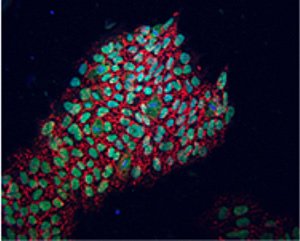New recipes for stem cells

Reprogramming mature cells to obtain stem cells (induced stem cells) have found new pathways in two different studies. On the one hand, researchers from the Center for Regenerative Medicine of Barcelona (CMRB) and the Salk Institute of California have shown that adult cells are more plastic than expected and that genes previously used to reprogram can be replaced by others. On the other hand, researchers at the University of Beijing have reprogrammed mouse cells without using any gene, using only chemical compounds.
Shinya Yamanaka presented her first recipe for reprogramming adult cells in 2006. This recipe basically consists of the introduction of four active genes into embryonic cells into adult cells. These introduced genes reproach the adult cell and make it pluripotent. The problem is that two of these genes are oncogenes (OCT4 and SOX2), that is, with risk of tumors. Therefore, since then, multiple attempts have been made to create stem cells without using these genes, but so far it has not been possible to reprogram the cells without having to use at least one of them (OCT4). But now they have achieved it in two ways.
In the research conducted by Juan Carlos Izpisua, of the Salk Institute, it has been demonstrated with human cells that it is not necessary to use these active but silenced genes in adult embryonic cells. The paper, published in the journal Cell Stem Cell, has shown that seven other active genera in adult cells can also be reprogrammed. They are genes with different functions and researchers believe they will find more. In addition, they stressed that the important thing is not to have one gene or another, but that is what shows that adult cells are more flexible than one would expect and that there can be several ways of reprogramming.
Beijing researchers have used another way. They have worked with mouse cells and managed to reprogram them without any gender. Compounds have been sought to replace reprogrammer genes. After searching for 10,000 small molecules, they have achieved it with a cocktail made up of seven compounds. A reprogramming of 0.2% of treated adult cells is observed, which is comparable to other techniques. To prove that the reprogrammed cells were truly pluripotent, they introduced them into the mouse embryos and saw that they gave the main cellular types. The work has been published in the journal Science.
Buletina
Bidali zure helbide elektronikoa eta jaso asteroko buletina zure sarrera-ontzian











